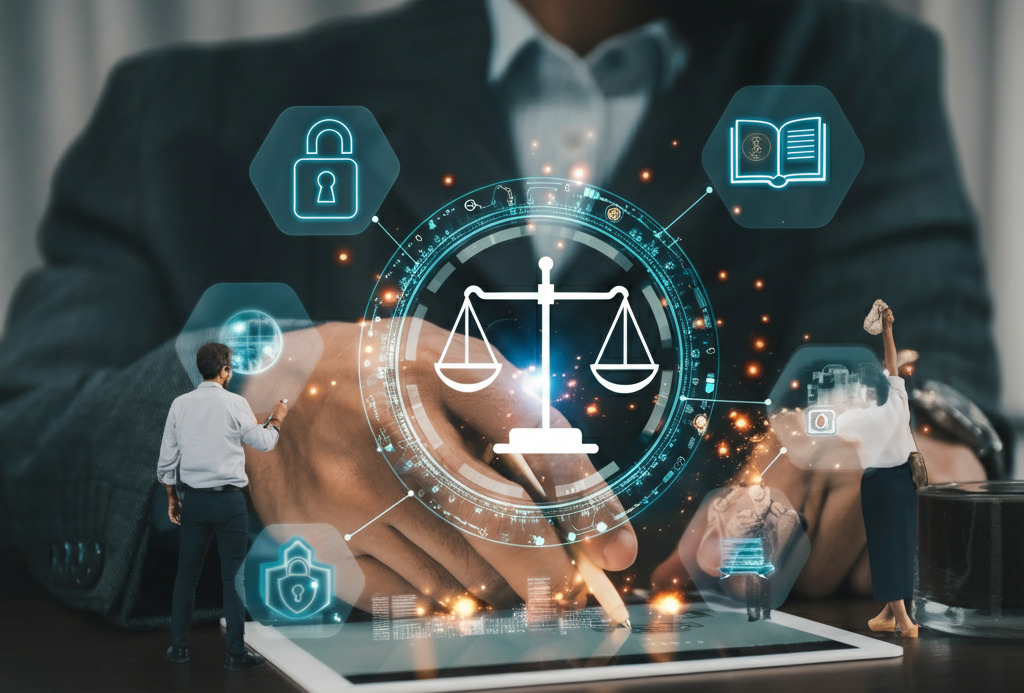Tech companies are making unprecedented investments in AI. AI spending is skyrocketing as companies race to build cutting-edge infrastructure that will define the future of artificial intelligence. This surge in investment shows how AI is shaping the future of innovation. In this article, we’ll look at what’s next for AI and why tech companies are investing so heavily. These unprecedented funding efforts cannot be overlooked, as they provide a glimpse into the technologies shaping our future.
Look at the Headlines
Recent headlines about where and how tech companies are investing reveal a fascinating trend. The consistency across these companies is striking, and the sheer scale of investment is staggering. So, it’s clear that these tech giants recognize AI as the transformative force that will shape the future of our world. Here are just a few of the headlines:
“Elon Musk’s xAI is trying to raise $9.3 billion in debt and equity as the accelerating costs to build artificial intelligence models outpace its revenue growth, Bloomberg reported, citing anonymous sources.“
“Mark Zuckerberg’s Meta, hell-bent on expanding its artificial intelligence capabilities, just invested $14.3 billion in Scale AI, acquiring a 49 percent stake in the San Francisco-based startup. Scale, now valued at $29 billion just nine years after its founding, will remain a separate company, but as part of the investment, Meta effectively poached 28-year-old Scale co-founder and CEO Alexandr Wang. Wang is set to lead the tech giant’s new superintelligence unit, Meta confirmed in a statement to the press.“
“Apple’s announcement Monday of a $500 billion U.S. investment is the latest initiative by one of a handful of tech giants pursuing aggressive expansion, strategic pullbacks and novel collaborative models to navigate the unprecedented demands of next-generation AI systems.“
“In a move that reflects the rapidly increasing intersection between artificial intelligence and robotics, industry giants Nvidia and Samsung have announced their investment in Skild AI, a budding leader in robotics vision technology. The $4.5 billion funding round seeks to push the boundaries of what robots can achieve in various sectors, effectively preparing Skild AI for soaring demand as industries gravitate towards automation and AI-driven efficiency.“
“In Q1 2025, Microsoft stunned markets with the announcement of an $80 billion capital expenditure (CapEx) plan for the fiscal year—its largest annual investment ever. The lion’s share is earmarked for cloud infrastructure, AI supercomputing, and data center expansion across key global markets.“
“OpenAI has closed its long-awaited funding round at a valuation of $157 billion, including the $6.6 billion the company raised from an extensive roster of investment firms and big tech companies.“
“In a strategic maneuver poised to disrupt the rapidly solidifying artificial intelligence landscape, Amazon is pledging an investment of up to $4 billion in Anthropic, a formidable rival to OpenAI. This high-stakes collaboration aims to pioneer industry-leading, safe, and highly controllable AI models.“
“Google parent Alphabet (GOOGL) said it plans to invest $75 billion in capital expenditures this year, as it joins Big Tech rivals in accelerating spending on artificial intelligence infrastructure.“
Value for Investments
So, what’s the benefit for these tech companies as they compete with one another? Will these massive investments in AI truly deliver the value they’re hoping for? The answer lies in the potential of artificial intelligence and machine learning technology. AI has been a game changer, allowing for faster data processing, improved decision-making capabilities and more efficient operations. Therefore, companies that invest heavily in AI can gain a competitive edge over their peers.
Targeting specific areas like AI infrastructure is crucial to drive growth and stay ahead of the curve. Google Cloud plans to build four new data centers this year to improve client services. Facebook recently announced a $100 million investment in news companies through publisher partnerships, expanding its role in the media industry.
Therefore, the rapid advancement of technology means these companies must constantly upgrade their infrastructure to meet customer demands. This also opens up opportunities for other tech companies and startups to enter the market, offering specialized services and solutions.
So, what are tech companies trying to achieve with their massive AI investments as they compete against each other? What strategies are driving their ambitions? Let’s take a look at some of the key factors that are propelling these tech giants forward.
Innovation and Disruption
Innovation and disruption in all industries are fueled by an unwavering commitment to adopting and advancing new technologies. So, for technology companies, staying competitive means continuously challenging boundaries and introducing groundbreaking ideas that redefine traditional norms.
As an example, look at streaming giants like Netflix and Amazon Prime. These platforms have transformed how we consume entertainment. Gone are the days of waiting for scheduled TV broadcasts or purchasing physical copies of movies and shows. Instead, viewers now enjoy instant access to vast libraries of content, available anytime, anywhere. This monumental shift hasn’t just changed how audiences experience entertainment—it has revolutionized how content is produced, marketed, and distributed. And this wave of transformation is reshaping industries across the board.
In this context, the enormous investments tech companies are making in artificial intelligence seem logical. But the scale of these investments in AI is unprecedented. Leading firms prioritize industry evolution and better user experiences—AI enhances their ability to stay ahead. Yet, it raises an important question: what larger vision underpins these investments?
Are we moving toward a future filled with physical robots as an everyday reality? Could automation reach a point where it fundamentally reshapes the workforce as we know it?
The ultimate destination of this relentless innovation remains uncertain. But one thing is clear: the questions it raises are just as important as the advancements themselves. Where will this technological revolution take us next? How will it impact our lives, our jobs, and our society as a whole?
The Impact of Automation on Society
As technology advances rapidly, automation is impacting all areas of society. From manufacturing and transportation to healthcare and finance, automation is revolutionizing industries and reshaping the way we work.
One of the most significant impacts of automation is its potential to disrupt traditional employment models. As machines become more intelligent and efficient, many tasks that were previously performed by humans are now being automated. This raises concerns about job displacement and the future of work.
On one hand, increased automation can create new jobs in fields like robotics, data analysis, and artificial intelligence. Therefore, these roles require in-demand skills and often offer higher salaries and better conditions than traditional manual labor jobs.
On the other hand, automation also has the potential to eliminate or reduce the need for certain types of jobs. For example, manufacturing plants now rely heavily on robotic systems to assemble products, reducing the need for human workers. And this trend is expected to continue as technologies such as 3D printing become more advanced and cost-effective.
Therefore, as a result of these changes, there is a growing concern about job displacement and income inequality. While automation may create new job opportunities in some industries, it could also lead to significant job losses in others. So, this can have a ripple effect on the economy and society as a whole.
Robotic Automation
With advancements in AI and progress in quantum computing, the future of automation is evolving rapidly. Today, robots can already mimic human movement, hinting at a future where AI sparks unprecedented innovation. So, just as cars became a part of daily life, it’s easy to imagine personal robotic assistants becoming common. Capable of handling tasks in factories and homes, robots are set to transform how we live and work.
The Advancements in AI and Robotics
AI has made significant advancements in recent years enhancing the capabilities of robots. AI systems enable robots to learn from their environment and adapt to new situations without being explicitly programmed. So, this allows them to perform tasks that were previously thought impossible for machines.
One example is the use of AI-powered drones for delivery services. These drones can navigate through obstacles, avoid collisions, and even calculate the most efficient route based on real-time traffic data. As a result, they are able to deliver packages faster and more accurately than traditional methods.
AI-powered robots are also used in manufacturing and delivery. These robots can learn from data and make decisions to optimize production and improve efficiency. Therefore, they can also perform complex tasks such as quality control and product inspection with greater accuracy and speed.
Another area where AI is making a significant impact is in healthcare. From robot-assisted surgeries to personalized medicine, AI is transforming medical procedures and treatment development. Also, machine learning algorithms enable doctors to process and analyze vast amounts of medical data, allowing them to make precise diagnoses and recommend highly effective treatment plans for patients.
Therefore, tech companies are making bold investments to meet diverse needs and deliver value across countless industries. Many are striving to lead in areas that are still beyond our full understanding. So, as these investments transform into real products and services, their strategies and ambitions will become more apparent. One thing is certain: we must be ready for what’s ahead. Sitting idly by is not an option. So, learn about AI now to adapt to the future workplace and stay ahead.
You Need to Upskill or Reskill
The rise of AI has fueled a growing demand for skilled professionals in this rapidly evolving field. Therefore, companies are actively seeking talented individuals to develop and implement cutting-edge AI solutions, leading to a highly competitive job market. So, professionals with the right skills and experience are in high demand. Like other tech trends, such as cloud computing, tech professionals must understand their place in the AI landscape and adapt their skills to stay relevant.
Opportunities for Professionals in AI
As AI advances and integrates into daily life, it offers many opportunities for professionals across industries. Here are some potential career paths that individuals with a background in AI can pursue:
1. Data Scientist/Analyst
With the huge amounts of data generated daily, companies rely on data scientists and analysts to make sense of it. So, using AI algorithms, these experts extract valuable insights from large datasets to drive business decisions.
2. Machine Learning Engineer
Machine learning engineers focus on developing algorithms and models that enable machines to learn and improve without explicit programming. This field leads AI development, with applications in self-driving cars, natural language processing, and computer vision.
3. Robotics Engineer
Robotics engineers use engineering, mechanics, and programming to design robots that perform tasks autonomously. Advances in AI have driven rapid growth in robotics in recent years.
4. Business Intelligence Developer
Business intelligence (BI) developers use data tools to find patterns and trends in company data, helping organizations make better decisions. With AI integrated into BI, these professionals deliver more accurate insights. Also, BI developers collaborate with data scientists to create AI algorithms that enhance reporting and data visualization.
5. Virtual Reality Designer
The rise of virtual reality (VR) technology has increased demand for experts in creating immersive experiences. Virtual reality designers use their knowledge of programming, animation, and UX design to create realistic and interactive digital environments. Therefore, with AI, virtual reality designers can use AI tools to improve user experience and create advanced simulations.
6. Data Privacy Officer
As the use of data becomes more prevalent in various industries, protecting personal information has become a crucial aspect of any organization. So, this is where a Data Privacy Officer (DPO) comes in.
A DPO oversees an organization’s data protection strategy and ensures compliance with privacy laws like GDPR and CCPA. They work with legal, IT, and compliance teams to ensure personal data is handled legally and ethically.
Conclusion
In conclusion, tech companies are investing heavily in AI to shape a future where this technology transforms our lives. So, understanding how AI shapes the present and future is key to being prepared. These investments are too significant to overlook. Moreover, as AI becomes increasingly prevalent in our lives, it is important to prioritize ethical considerations and data privacy. As technology evolves, it’s crucial to understand AI’s risks and benefits and work toward its responsible use.
Click here for a post on the integration of AI with physical robots.





